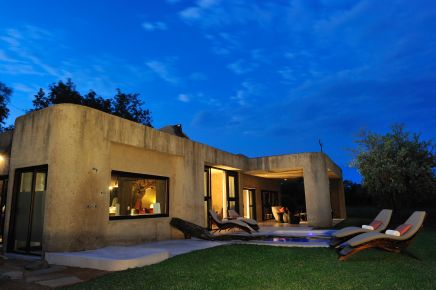There are nine entrance gates to Kruger, namely (counterclockwise from the north) Pafuri, Punda Maria, Phalaborwa, Orpen, Paul Kruger, Phabeni, Numbi, Malelane, and Crocodile Bridge. National access roads to all the entrance gates are paved. If you're staying at one of the park's lodges or camps, you can arrange for a late-entry escort until 9 pm for the following gates (and their nearby camps): Paul Kruger (Skukuza), Numba (Pretoriuskop), Malelane (Berg-en-Dal and Malelane), Crocodile Bridge (Crocodile Bridge), Punda Maria (Punda Maria), and Orpen (Orpen).
With excellent roads and accommodations, Kruger is a great place to drive around yourself, though first-timers may want to think again about getting behind the wheel, since not everyone knows what to do when an enormous elephant with wavering ears is standing in front of your vehicle, blocking the road. Travel times in the park are tough to estimate, in addition, and a hefty fine is levied if you don't make it out of the gates on time.
An affordable solution is to join a game drive with a park ranger, who will drive you around in an open-sided four-wheel-drive. All the major rest camps offer ranger-led bush drives in open-air vehicles (minimum of two people), and, if you're not staying in the park itself, you can still join a tour led by ranger; your option for this are the Park & Ride tours, which leave from the park's entrance gates. There are also plenty of outfitters who will arrange a safari for you (as well as accommodations). Most drives depart in the early morning for either a half day or full day.
There are also bush walks on offer, something else you can't do on your own.
Whatever you do, don't miss out on a ranger-led sunset drive, when the park is closed to regular visitors. You'll sit in a large open-air vehicle, scanning the bush as dusk settles over the landscape with the ranger, who uses a powerful spotlight to pick out animals, including nocturnal creatures that you would never see otherwise. You might see bush babies (enchanting furry, big-eared, big-eyed little primates that leap from bush to bush), servals (mini-leopard-looking felines), civets (black-and-white possum look-alikes), genets (spotted catlike creatures with bushy tails), or an aardvark ambling along in the moonlight. Scrutinize branches of big trees for the giant eagle owl, with its pink eyelids, or a leopard chewing on its kill. Night is also the time when hyenas and lions hunt. These opportunities alone make a night drive an unforgettable experience. The three- to four-hour trip leaves the rest camps roughly half an hour before the gates close. Book drives at least two weeks in advance or when you make your park reservations, and don't forget your binoculars, a snack or drink, and a warm jacket whatever the season.




